Abstract
Radiolabeled photobilirubins, prepared in vitro by anaerobic illumination of [34C]bilirubin, were injected intravenously into homozygous jaundiced Gunn rats with an external bile fistula. With the animals kept in darkness, the labeled photobilirubins were excreted rapidly in bile. Photobilirubins IA and IB were excreted primarily as unconjugated bilirubin, whereas photobilirubin II was excreted primarily as photobilirubin II and not converted into bilirubin. Bile of Gunn rats given no exogenous pigments, but undergoing phototherapy, contained a large proportion of photobilirubin II and, if collected in liquid nitrogen, traces of photobilirubins I; neither was found in bile when these rats were kept in the dark. Because there is prior evidence that these rats were kept in the dark. Because there is prior evidence that these photobilirubins are isomers of bilirubin, these experiments indicate that the major mechanism of phototherapy is photoisomerization of bilirubin. Photobilirubin II is the unidentified major photoderivative described previously, whereas formation of photobilirubins IA and IB, and their reversion to bilirubin-IXalpha, account for the remarkably increased output of the parent pigment during phototherapy.
Full text
PDF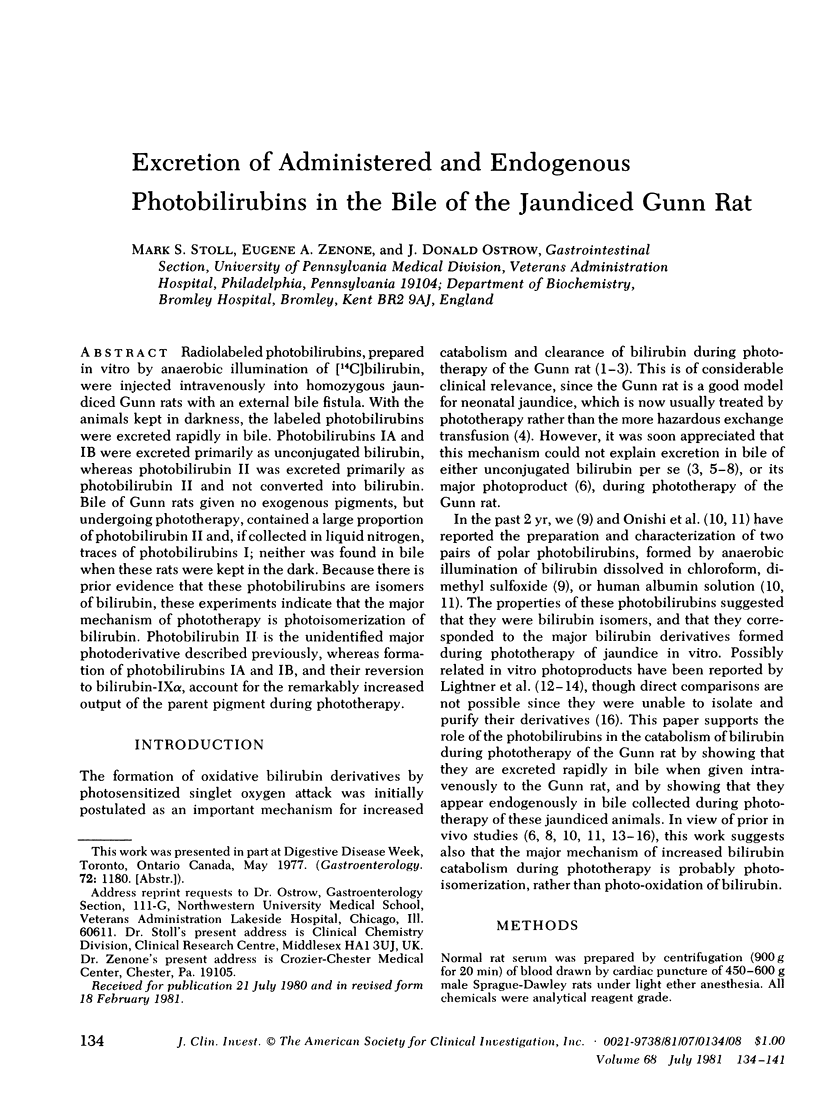
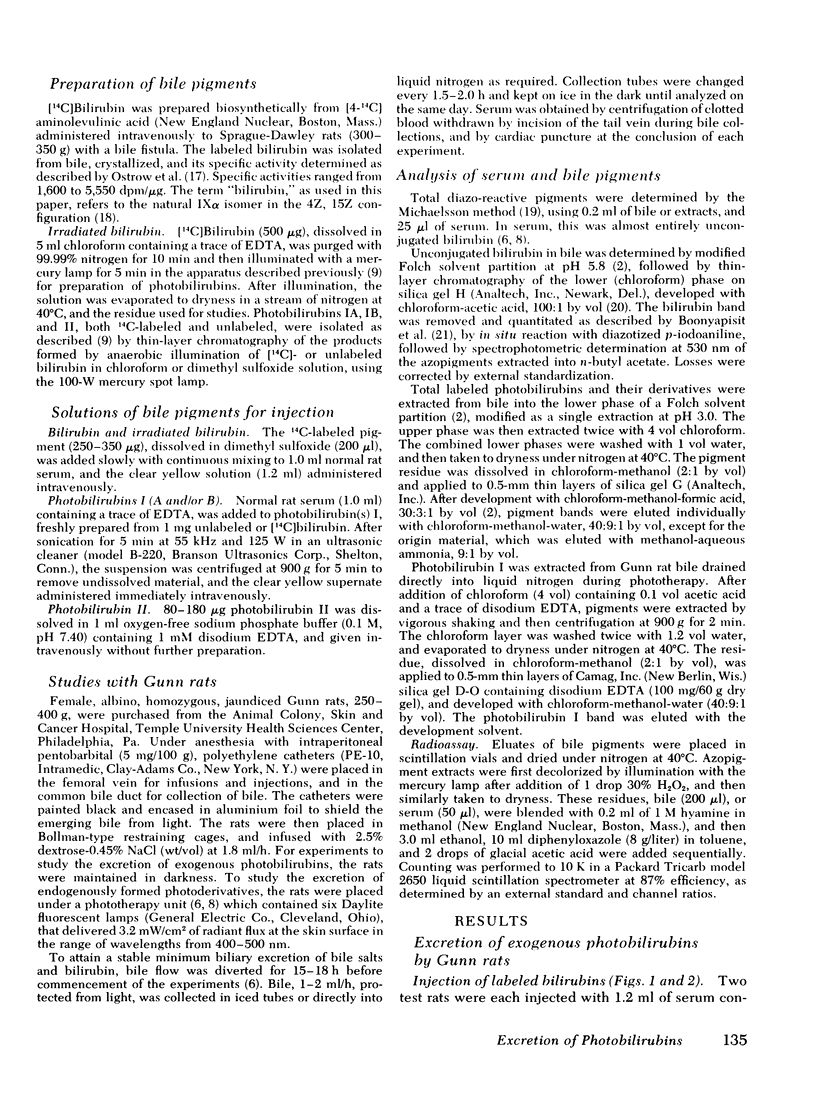
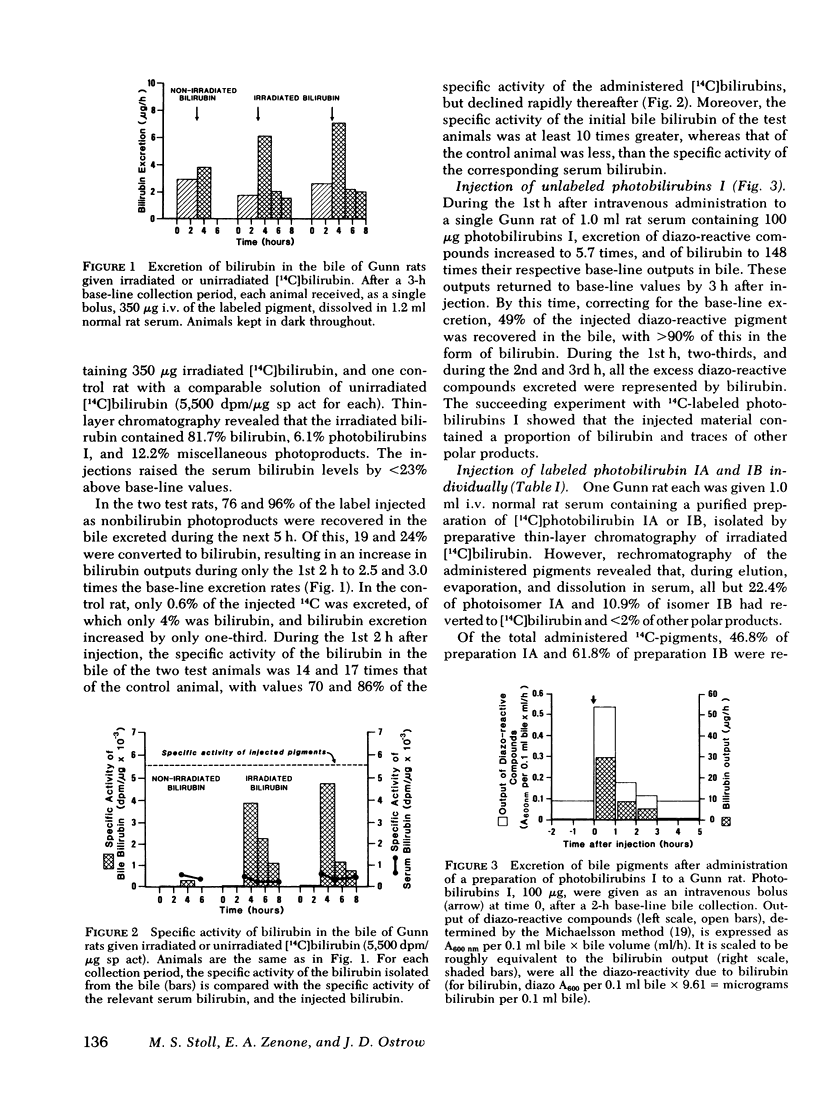
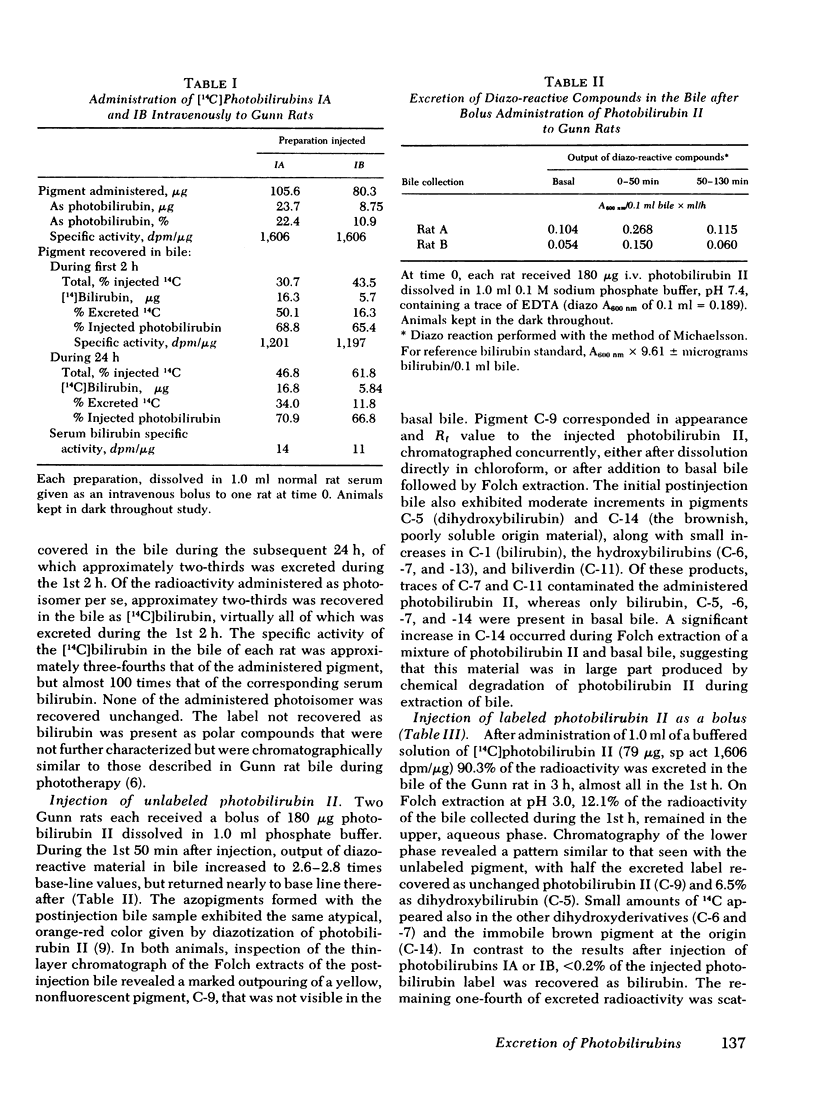

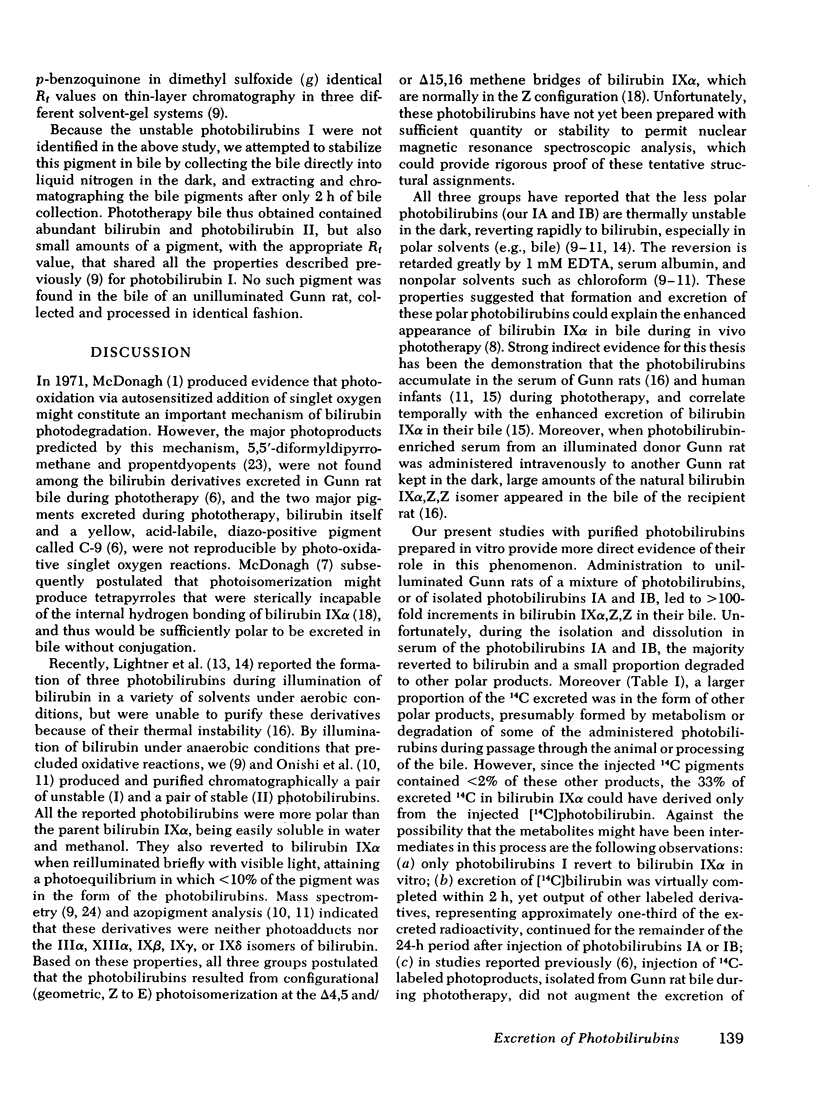
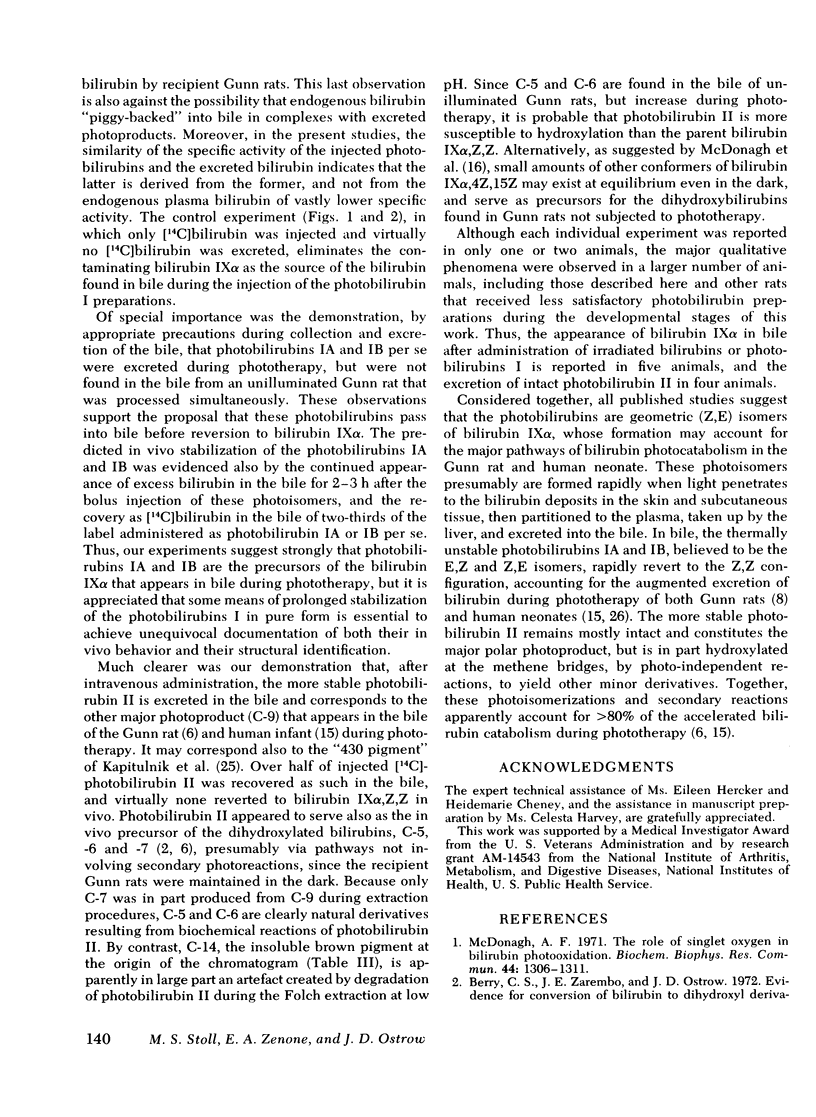
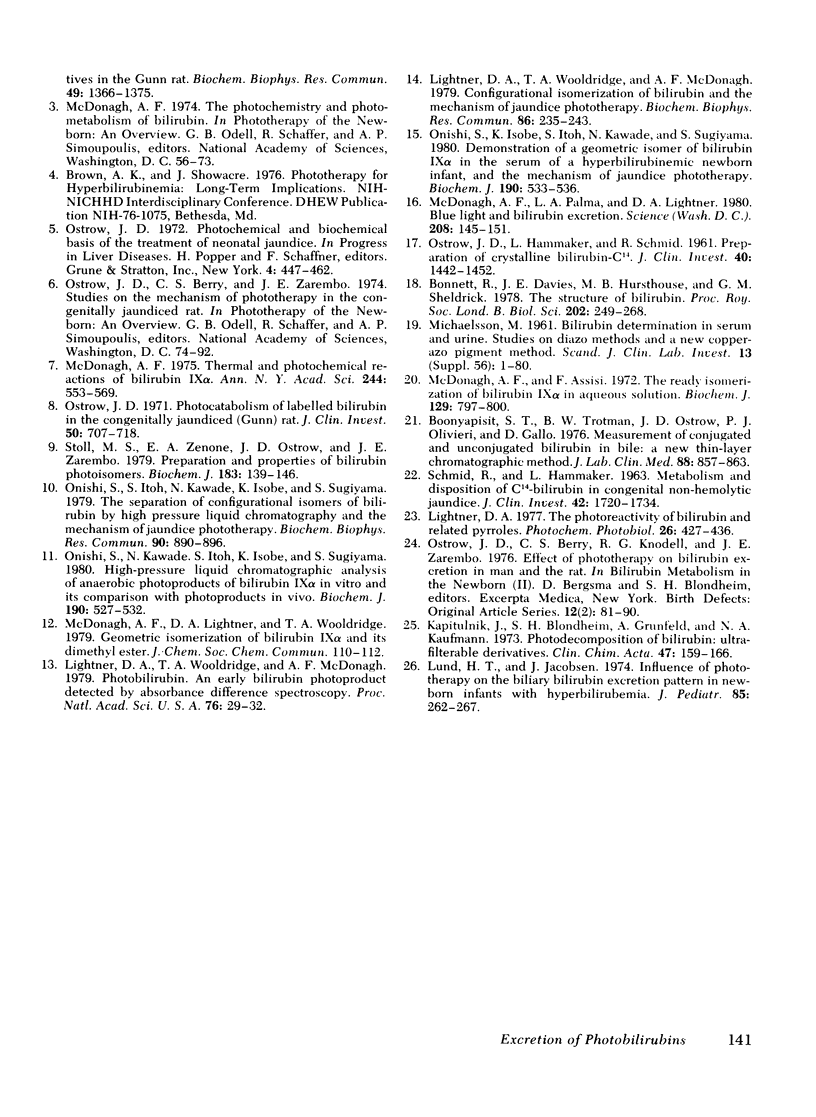
Selected References
These references are in PubMed. This may not be the complete list of references from this article.
- Berry C. S., Zarembo J. E., Ostrow J. D. Evidence for conversion of bilirubin to dihydroxyl derivatives in the gunn rat. Biochem Biophys Res Commun. 1972 Dec 4;49(5):1366–1375. doi: 10.1016/0006-291x(72)90617-1. [DOI] [PubMed] [Google Scholar]
- Bonnett R., Davies J. E., Hursthouse M. B., Sheldrick G. M. The structure of bilirubin. Proc R Soc Lond B Biol Sci. 1978 Jun 23;202(1147):249–268. doi: 10.1098/rspb.1978.0066. [DOI] [PubMed] [Google Scholar]
- Boonyapisit S. T., Trotman B. W., Ostrow J. D., Olivieri P. J., Gallo D. Measurement of conjugated and unconjugated bilirubin in bile. II. A new thin-layer chromatographic method. J Lab Clin Med. 1976 Nov;88(5):857–863. [PubMed] [Google Scholar]
- Kapitulnik J., Blondheim S. H., Grunfeld A., Kaufmann N. A. Photodecomposition of bilirubin: ultrafiltrable derivatives. Clin Chim Acta. 1973 Aug 30;47(2):159–166. doi: 10.1016/0009-8981(73)90311-2. [DOI] [PubMed] [Google Scholar]
- Lightner D. A., Wooldridge T. A., McDonagh A. F. Configurational isomerization of bilirubin and the mechanism of jaundice phototherapy. Biochem Biophys Res Commun. 1979 Jan 30;86(2):235–243. doi: 10.1016/0006-291x(79)90857-x. [DOI] [PubMed] [Google Scholar]
- Lightner D. A., Wooldridge T. A., McDonagh A. F. Photobilirubin: an early bilirubin photoproduct detected by absorbance difference spectroscopy. Proc Natl Acad Sci U S A. 1979 Jan;76(1):29–32. doi: 10.1073/pnas.76.1.29. [DOI] [PMC free article] [PubMed] [Google Scholar]
- Lund H. T., Jacobsen J. Influence of phototherapy on the biliary bilirubin excretion pattern in newborn infants with hyperbilirubinemia. J Pediatr. 1974 Aug;85(2):262–267. doi: 10.1016/s0022-3476(74)80408-7. [DOI] [PubMed] [Google Scholar]
- McDonagh A. F., Palma L. A., Lightner D. A. Blue light and bilirubin excretion. Science. 1980 Apr 11;208(4440):145–151. doi: 10.1126/science.7361112. [DOI] [PubMed] [Google Scholar]
- McDonagh A. F. The role of singlet oxygen in bilirubin photo-oxidation. Biochem Biophys Res Commun. 1971 Sep 17;44(6):1306–1311. doi: 10.1016/s0006-291x(71)80228-0. [DOI] [PubMed] [Google Scholar]
- McDonagh A. F. Thermal and photochemical reactions of bilirubin IX-alpha. Ann N Y Acad Sci. 1975 Apr 15;244:553–569. doi: 10.1111/j.1749-6632.1975.tb41554.x. [DOI] [PubMed] [Google Scholar]
- OSTROW J. D., HAMMAKER L., SCHMID R. The preparation of crystalline bilirubin-C14. J Clin Invest. 1961 Aug;40:1442–1452. doi: 10.1172/JCI104375. [DOI] [PMC free article] [PubMed] [Google Scholar]
- Onishi S., Isobe K., Itoh S., Kawade N., Sugiyama S. Demonstration of a geometric isomer of bilirubin-IX alpha in the serum of a hyperbilirubinaemic newborn infant and the mechanism of jaundice phototherapy. Biochem J. 1980 Sep 15;190(3):533–536. doi: 10.1042/bj1900533. [DOI] [PMC free article] [PubMed] [Google Scholar]
- Onishi S., Itoh S., Kawade N., Isobe K., Sugiyama S. The separation of configurational isomers of bilirubin by high pressure liquid chromatography and the mechanism of jaundice phototherapy. Biochem Biophys Res Commun. 1979 Oct 12;90(3):890–896. doi: 10.1016/0006-291x(79)91911-9. [DOI] [PubMed] [Google Scholar]
- Onishi S., Kawade N., Itoh S., Isobe K., Sugiyama S. High-pressure liquid chromatographic analysis of anaerobic photoproducts of bilirubin-IX alpha in vitro and its comparison with photoproducts in vivo. Biochem J. 1980 Sep 15;190(3):527–532. doi: 10.1042/bj1900527. [DOI] [PMC free article] [PubMed] [Google Scholar]
- Ostrow J. D. Photocatabolism of labeled bilirubin in the congenitally jaundiced (Gunn) rat. J Clin Invest. 1971 Mar;50(3):707–718. doi: 10.1172/JCI106541. [DOI] [PMC free article] [PubMed] [Google Scholar]
- Ostrow J. D. Photochemical and biochemical basis of the treatment of neonatal jaundice. Prog Liver Dis. 1972;4:447–462. [PubMed] [Google Scholar]
- SCHMID R., HAMMAKER L. METABOLISM AND DISPOSITION OF C14-BILIRUBIN IN CONGENITAL NONHEMOLYTIC JAUNDICE. J Clin Invest. 1963 Nov;42:1720–1734. doi: 10.1172/JCI104858. [DOI] [PMC free article] [PubMed] [Google Scholar]
- Stoll M. S., Zenone E. A., Ostrow J. D., Zarembo J. E. Preparation and properties of bilirubin photoisomers. Biochem J. 1979 Oct 1;183(1):139–146. doi: 10.1042/bj1830139. [DOI] [PMC free article] [PubMed] [Google Scholar]


